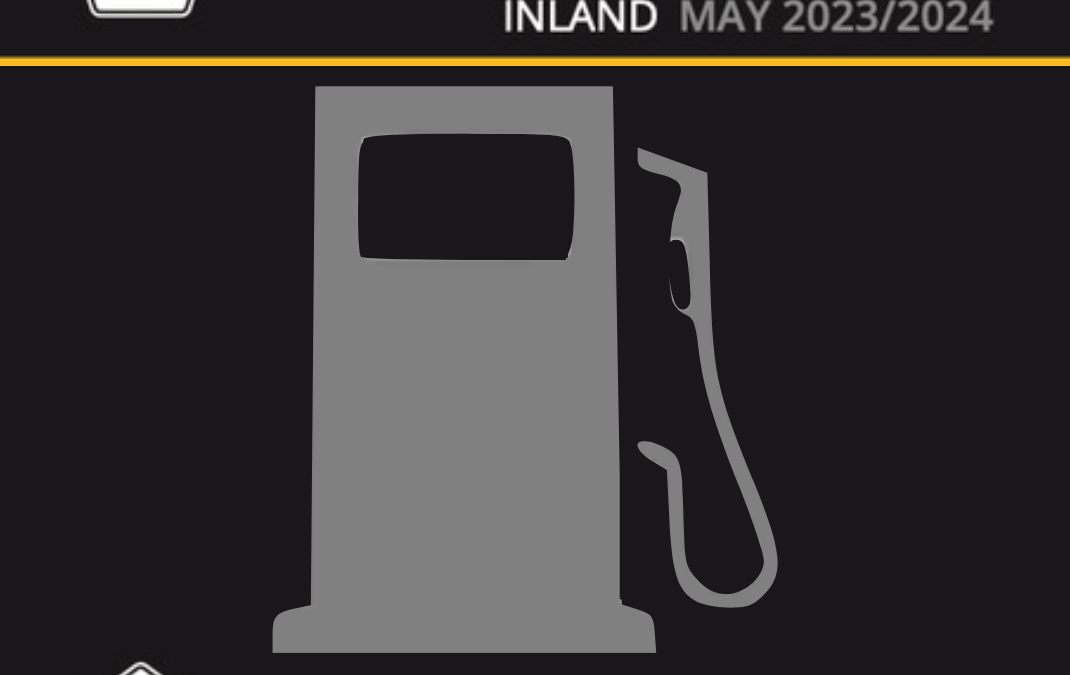Petrol users across South Africa are paying around R1.50 a litre more for fuel in May 2023 than at the same time last year. The increases to 93ULP inland and 95ULP at the coast represent increases of around 7% to petrol over a year period. The wholesale price of diesel over the same period decreased from R21.99/l in May 2022 to R20.15 in May 2023 inland, and from R21.34/l in May 2022 to R19.43/l in May 2023 at coastal rates.
The decrease to the price of diesel must, however, be seen against the backdrop of significant prices to this fuel between June and December 2022 when the price of a litre of diesel inland reached R25.40/l in July 2022. Similarly, petrol prices during this period (June – December 2022) remained high with ULP95 (inland) reaching R26.74/l in July 2022, and ULP95 at the coast reaching R26.09/l in the same month.
In May 2022, a litre of ULP93 inland cost R21.51 while the same fuel costs R23.01/l in May 2023. A litre of ULP95 at the coast cost R21.09 in May 2022, in May 2023 that fuel now costs R22.62/l.
South Africa’s fuel price is comprised of many different elements, some of which make fuel in the country more expensive than in neighbouring countries to which South Africa exports. To understand the different elements which comprise a litre of petrol locally, the Automobile Association (AA) publishes a fuel price breakdown to give consumers a snapshot of the composition of a litre of petrol inland and at the coast.
The figures are based on 93 Octane fuel (inland) and 95 Octane (coastal).
The costs are calculated using May fuel price data which incorporates the two main taxes paid on every litre of fuel namely the General Fuel Levy (GFL) and the Road Accident Fund (RAF) levy. Increases to these levies are usually announced in February during the Finance Minister’s annual Budget speech and come into effect in April. In 2023, no increases to these levies were affected, but they remain significant contributors to the overall prices of fuel.
In May 2023, the total cost of the two main levies stands at R6.14 (R3,96 for the GFL and R2.18 for the RAF levy), which is levied on every litre of petrol sold in the country. The GFL is lower for diesel at R3.82 while the RAF levy remains the same.
Increases to fuel prices also mean an increase to goods which are transported across the country as operators recover these higher input costs through increases which are passed on to consumers.
The AA reiterates its position of mid-April 2021, when it made representations to the Parliamentary Portfolio Committee on Mineral Resources and Energy, that several steps can be taken to mitigate rising fuel costs in the country. Among these are a recalculation and audit of the existing elements within the fuel pricing model and a reduction of the costs of the Road Accident Fund (RAF) to motorists through:
- Better management and governance of the RAF
- Improved road safety to reduce demand on the RAF
- Better traffic policing
- Safer Roads/Safer Drivers/Safer Cars/Better Post-Crash Intervention
- Better pedestrian safety education
- Privatisation of the RAF, or at minimum, semi-privatisation of claims management
The Association further notes that the misappropriation of funds and corruption are siphoning money away from the GFL which could be used better if allocated properly and accounted for. Investments in alternative forms of public transport, and investments in improving Transnet, are vital.
Fuel Price Breakdown May 2023
The fuel price in South Africa is comprised of four main elements:
- The GFL
- RAF Levy
- Basic Fuel Price (freight and insurance costs, cargo dues, storage, and financing)
- Wholesale and retail margins, and distribution and transport costs
As of May 2023, the GFL is R3.96 which represents around 17 percent of every litre of petrol sold in South Africa. The RAF levy priced at R2.18 a litre represents around 11 percent on every litre of fuel sold.
Combined, the two main levies will deliver around R138bn in revenue to government, approximately R90bn going to the GFL with the rest going to the RAF. The GFL contribution goes directly to Treasury and can be used for any purpose government determines.
In South Africa, the fuel price is adjusted on the first Wednesday of every month and is determined by two main factors: The Rand/US Dollar exchange rate (how fuel is purchased), and international petroleum prices (how much the fuel costs to purchase).
The Basic Fuel Price (BFP) is calculated based on costs associated with shipping petroleum products to South Africa from the Mediterranean area, Arab Gulf, and Singapore. These costs include insurance, storage, and wharfage (the cost to harbour facilities when off-loading petroleum products into storage). The current BFP is around R12.63 (ULP93 inland).
Other costs associated with the petrol price include transport costs (from the harbour to inland areas, which accounts for the difference in price between coastal and inland prices), custom and excise duties, retail margins paid to fuel station owners (currently R2.42 on every litre sold), and secondary storage costs. These costs currently total R4.24/l for inland petrol, and R3.52/l for coastal petrol.
Using the current data, filling a 50-litre tank of fuel inland (93ULP) will cost R1150.50 inland, and R1130/l (95ULP) at the coast – R76.50 more now than a year ago.
In other good news, click on the button below, fill out your details and you can WIN! Sign up with the AA before the end of May,and stand a chance to WIN a day of pampering and spoils for you and your bestie worth R10 000! #MomsMonth

